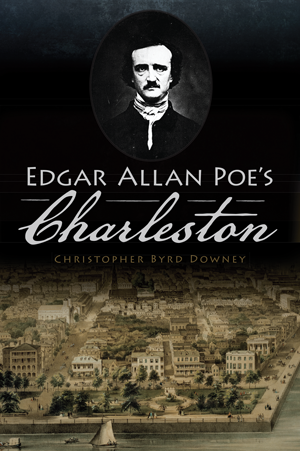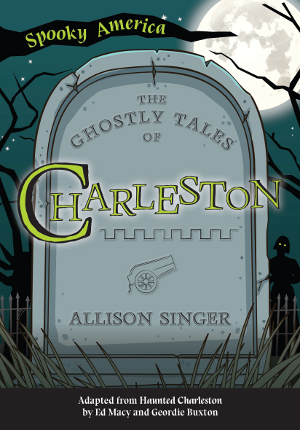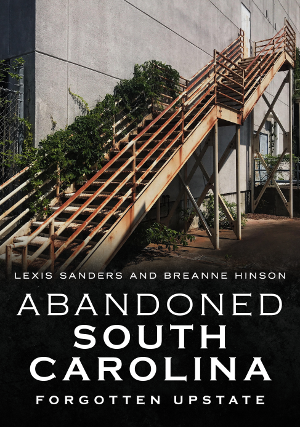
Edgar Allan Poe ranks as one of the most beloved American authors in all of literature. Many credit him as a macabre master of the Romanticist genre and the Godfather of Goth. While the whole world would eventually embrace Poe, his literary legacy was never a sure thing. In fact, Poe, the author and father of the the detective story genre, crammed a few twists into his professional life before finding immortality in print. And even though New York, Philadelphia, Richmond, and most famously Baltimore all claim ties to the writer, it is Charleston, South Carolina that Poe returns to throughout his short life.
Charleston Stages
After his father David Poe abandoned the family, Edgar and his brother travelled with their mother in a touring theater company. Eliza Poe found steady work on stages in Charleston acting and singing, but nearly four months of working and caring for her children took its toll on the young mother. She fell ill and never recovered, leaving behind a three-year-old Edgar. The tragedy would never fully leave Poe, and would later serve as a recurring theme in his fiction and poems.
Stationed in Charleston
Poe was soon adopted by a family with better prospects than his birth parents could provide. Even though a young Edgar received a decent education, it did little to lessen his emotional anxiety. As a freshman at the University of Virginia, Poe was unprepared and financially strapped. In an attempt to hide from creditors, he enlisted in the army. In Battery H of the First Regiment of the Artillery, Private Poe received orders to sail south to relieve the garrison posted at Fort Moultrie on Sullivan’s Island, near Charleston. Poe prospered under the discipline of army life, particularly during his posting at Fort Moultrie. Poe’s restless mind and emotional instability forced him to seek solace elsewhere. During his more than one year at Fort Moultrie, Poe wrote poetry about a star and its connection to theological principles found in the Koran. His Lowcountry inspiration would wait fifteen years to appear in his fiction.
Related: The Fascinating Homes of Edgar Allan Poe
The Editor
Few would claim that Edgar Allan Poe wasn’t a genius. Before his place in literary canon was certified, Poe found solace in solving puzzles. While the thirty-year-old was editing Philadelphia’s Burton’s Gentleman Magazine, he was secretly moonlighting for Alexander’s Weekly Messenger as a puzzle champ who would challenge readers to stump him. His popularity emboldened Poe to strike out on his own with the (unsuccessful) Penn Magazine. Never lasting too long at any publication, Poe seemed to turn a corner, not in another editor’s post, but as a writer of short fiction. In 1833, Poe, hoping to win a $50 prize from Baltimore’s Saturday Visiter, submitted an entire collection of stories. He won, and even though he took a a job at the Southern Literary Messenger, prose would dominate the rest of his professional career.
“Tales of Ratiocination”
It’s easy to see the path from prolific, pulp puzzle-solver to writer of detailed detective tales. Poe’s talent for logical reasoning led him directly to prose. Poe would come to refer to his new work as “tales of ratiocination,” and his crime-solving protagonist C. Auguste Dupin delighted and amazed readers in now-classics “The Murders in the Rue Morgue,” “The Mystery of Marie Roget,” and “The Purloined Letter.” The detective story genre was born.

Literary Charleston
Poe found great inspiration in Charleston, South Carolina. Widely regarded as generally haunted, bursting with tales of ghosts and pirates, the coastal town is the setting for Poe’s short story “The Gold-Bug.” As serialized in Philadelphia’s Dollar Newspaper, “The Gold-Bug” is, at its core, a tale of a hunt for pirate treasure along the Carolina coastline, where Poe had visited as a young man and where he was stationed as a soldier, allowing him to paint a romantic picture of the Lowcountry for his readers. Following up with “The Oblong Box” in Godey’s Lady’s Book and the Dollar Newspaper, Poe invited readers to solve the mystery of the contents of an oblong box, where Charleston serves as a port of departure for the tale. Finally, Poe’s “The Balloon Hoax,” much like “The Oblong Box,” included Charleston, with the Lowcountry serving as the story’s destination.
Want to learn more about Poe and Charleston? Check out Edgar Allan Poe’s Charleston and other similar titles at arcadiapublishing.com!




